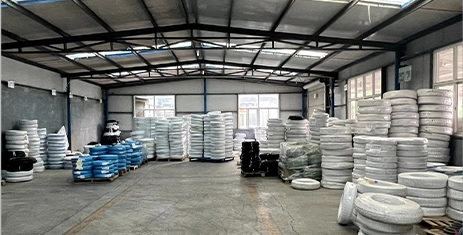Exploring Jeep Power Steering Hose Options for Optimal Performance and Reliability in Off-Road Adventures
Understanding Jeep Power Steering Hose Importance, Types, and Maintenance
When it comes to the performance and handling of a Jeep, the power steering system plays a vital role. A key component of this system is the power steering hose, which is responsible for transporting hydraulic fluid between the power steering pump and the steering gear. Understanding the importance of the power steering hose, the various types available, and how to maintain it can help Jeep owners ensure optimal vehicle performance and safety.
The Role of the Power Steering Hose
The power steering hose facilitates the flow of hydraulic fluid, which generates the force needed to assist the driver in steering the vehicle. This system reduces the amount of effort required to turn the steering wheel, especially in heavier vehicles like Jeeps. By providing positive steering feedback and decreasing strain on the driver, a well-functioning power steering hose is essential for a safe and enjoyable driving experience.
Types of Power Steering Hoses
There are primarily two types of power steering hoses the high-pressure hose and the return hose.
1. High-Pressure Hose This hose connects the power steering pump to the steering gear and is designed to withstand the high pressures generated by the hydraulic system. It typically features a reinforced lining to prevent leaks and bursts.
2. Return Hose After the hydraulic fluid has assisted in steering, it returns to the pump via the return hose. This hose operates at a lower pressure compared to the high-pressure hose but is equally important to ensure the continuous circulation of hydraulic fluid.
Common Issues with Power Steering Hoses
Like any automotive component, power steering hoses can develop issues over time
. Common problems include- Leaks One of the most significant concerns, a leak can lead to a drop in hydraulic fluid levels, resulting in poor steering performance. Leaks may develop due to wear and tear, exposure to extreme temperatures, or physical damage.
jeep power steering hose

- Cracking and Fraying Rubber hoses can become brittle over time, leading to cracks or fraying, which compromises their integrity.
- Kinks or Abrasions Foreign objects or improper installation can cause kinks in the hose or abrasions that may lead to fluid loss.
Maintenance Tips
To prolong the life of your Jeep’s power steering hose, regular maintenance and inspection are essential
1. Regular Inspection Periodically check the power steering hoses for signs of wear, such as cracks, fraying, or leaks. Pay attention to the connections and fittings to ensure they are secure.
2. Fluid Level Monitoring Keep an eye on the power steering fluid level. If you notice a constant decrease in fluid, it may indicate a leak that needs immediate attention.
3. Professional Servicing If you experience difficulty steering or notice any fluid leaks, consult a professional mechanic as soon as possible. A timely diagnosis can prevent more severe issues from developing.
4. Replace When Necessary If a hose is found to be damaged, it’s crucial to replace it with a high-quality part specifically designed for your Jeep model. Using substandard parts may lead to further problems.
Conclusion
In summary, the power steering hose is an essential component of a Jeep’s power steering system, playing a significant role in the vehicle's maneuverability and ease of handling. Understanding the types of hoses, being aware of common issues, and performing regular maintenance can help Jeep owners enjoy a smooth and safe driving experience. As with any vehicle component, proactive care can prevent small issues from becoming costly repairs, ensuring that your Jeep remains reliable on and off the road.
-
Ultimate Spiral Protection for Hoses & CablesNewsJun.26,2025
-
The Ultimate Quick-Connect Solutions for Every NeedNewsJun.26,2025
-
SAE J1401 Brake Hose: Reliable Choice for Safe BrakingNewsJun.26,2025
-
Reliable J2064 A/C Hoses for Real-World Cooling NeedsNewsJun.26,2025
-
Heavy-Duty Sewer Jetting Hoses Built to LastNewsJun.26,2025
-
Fix Power Steering Tube Leaks Fast – Durable & Affordable SolutionNewsJun.26,2025

